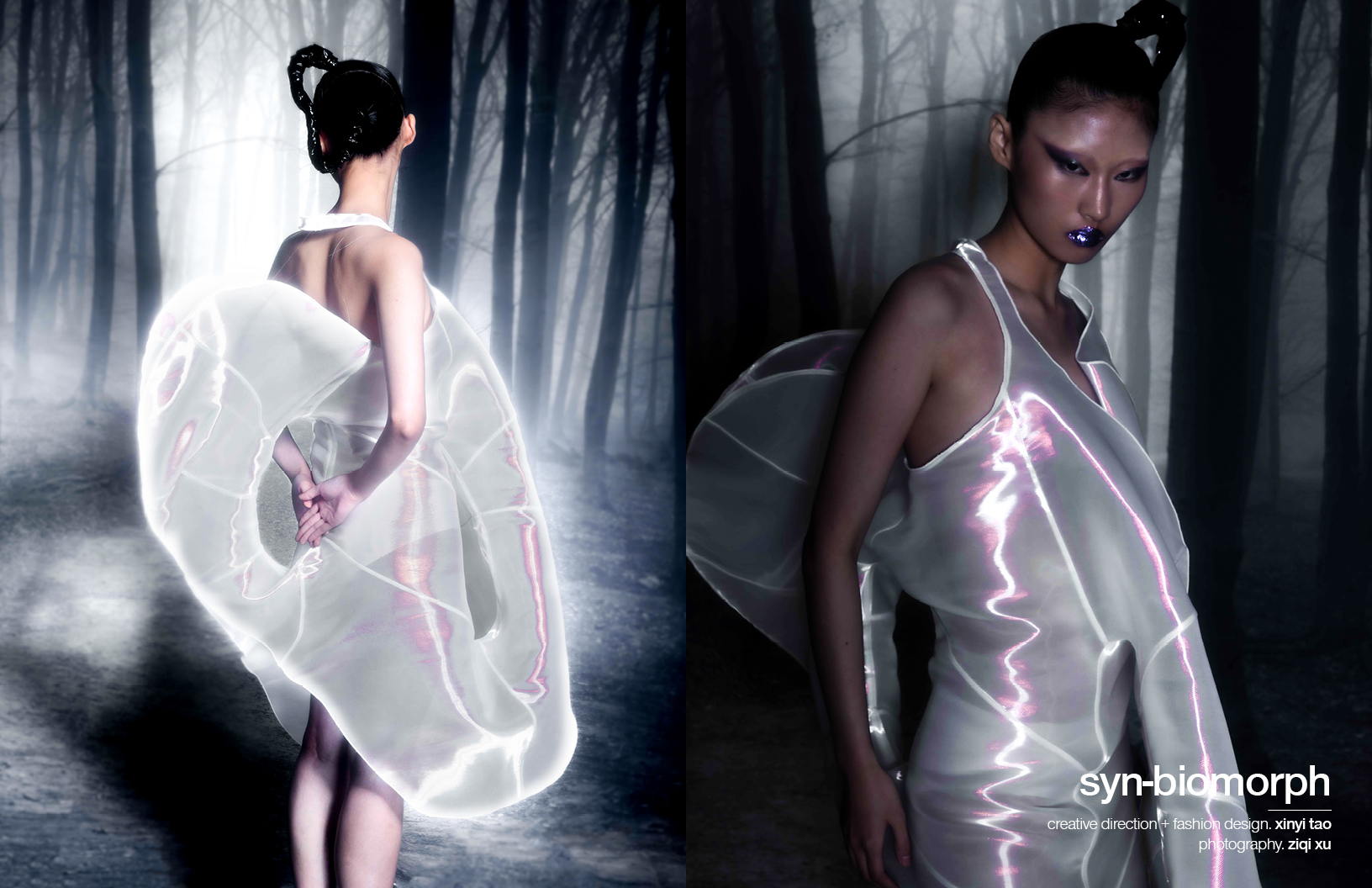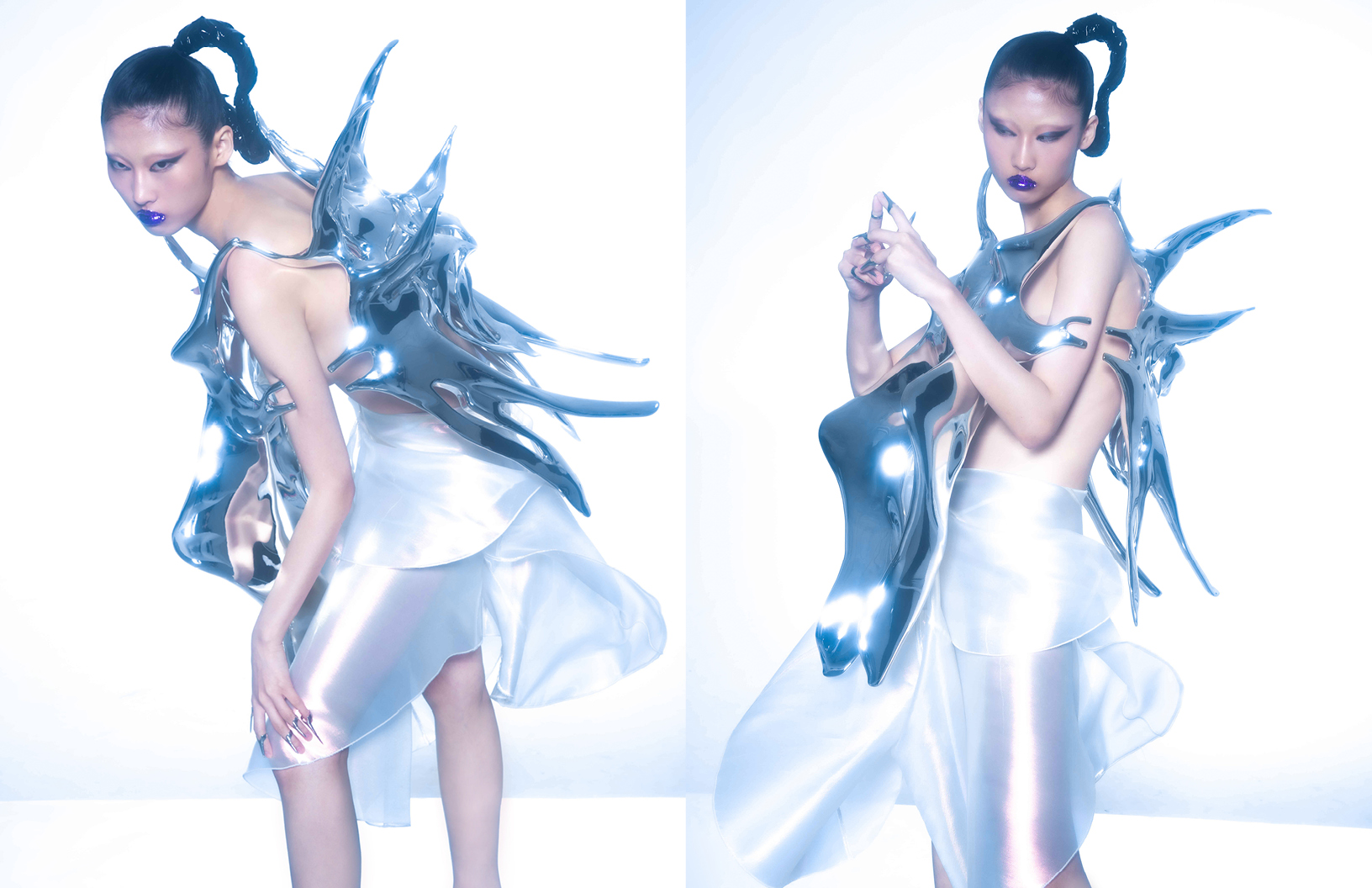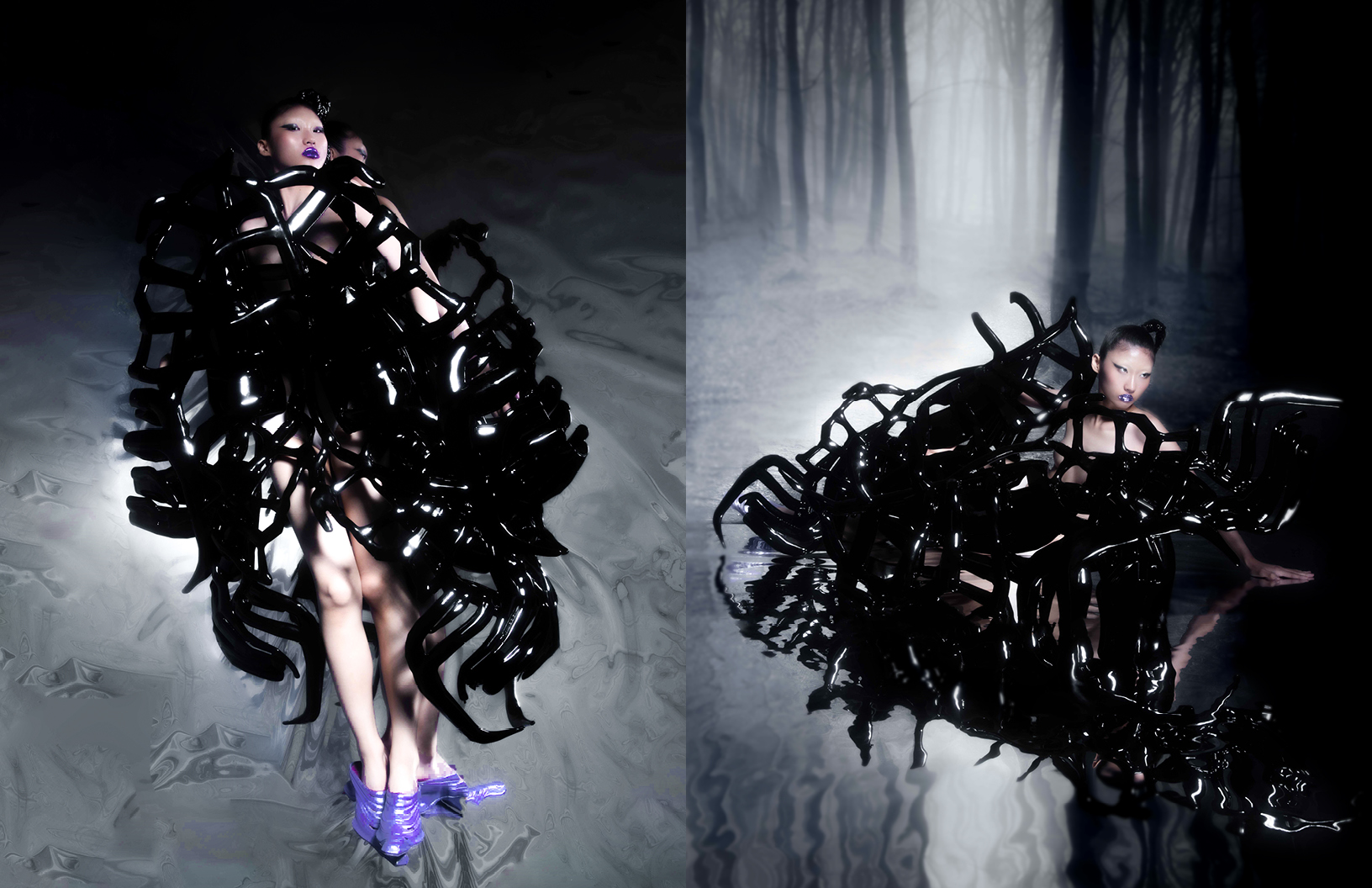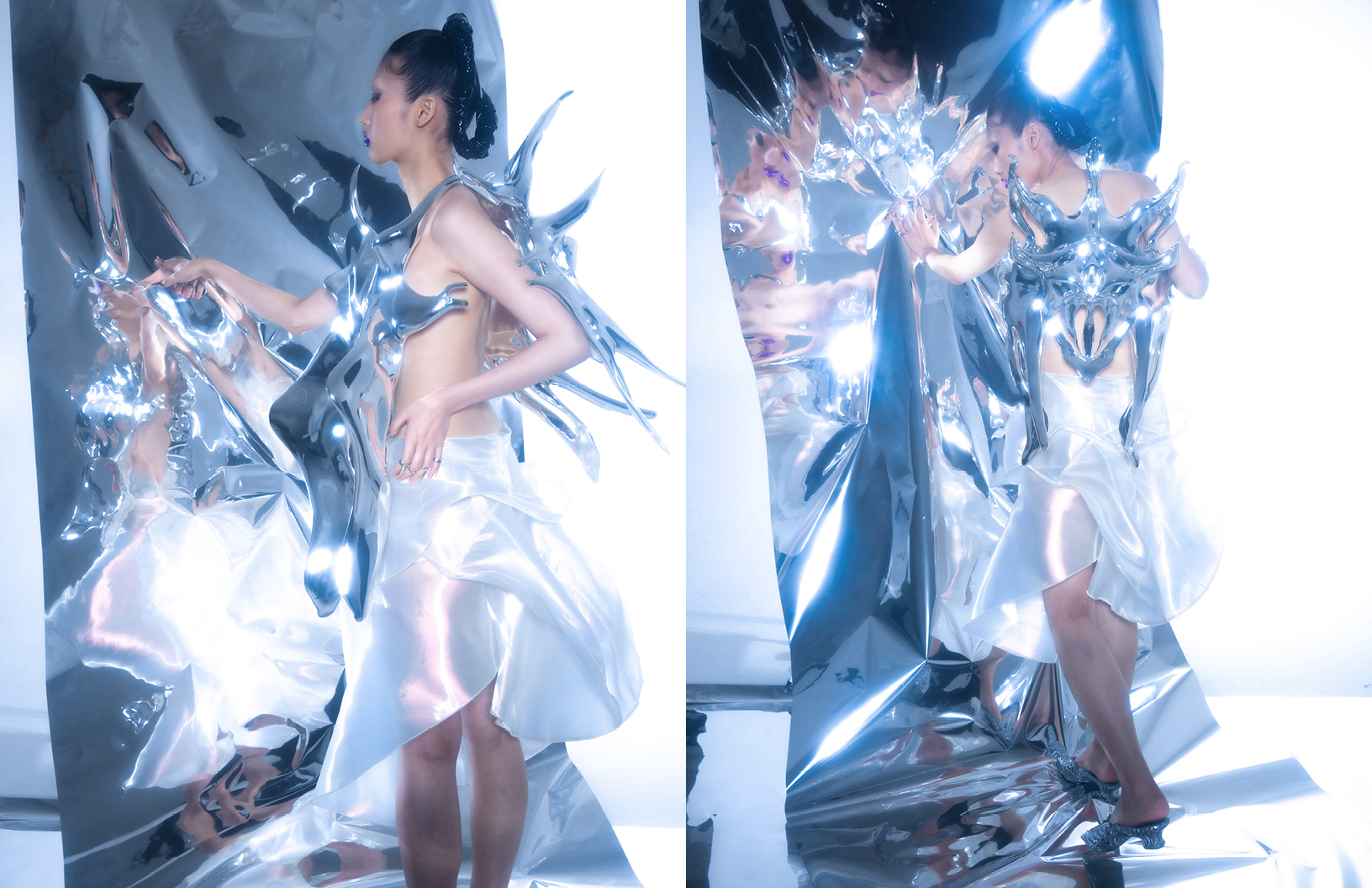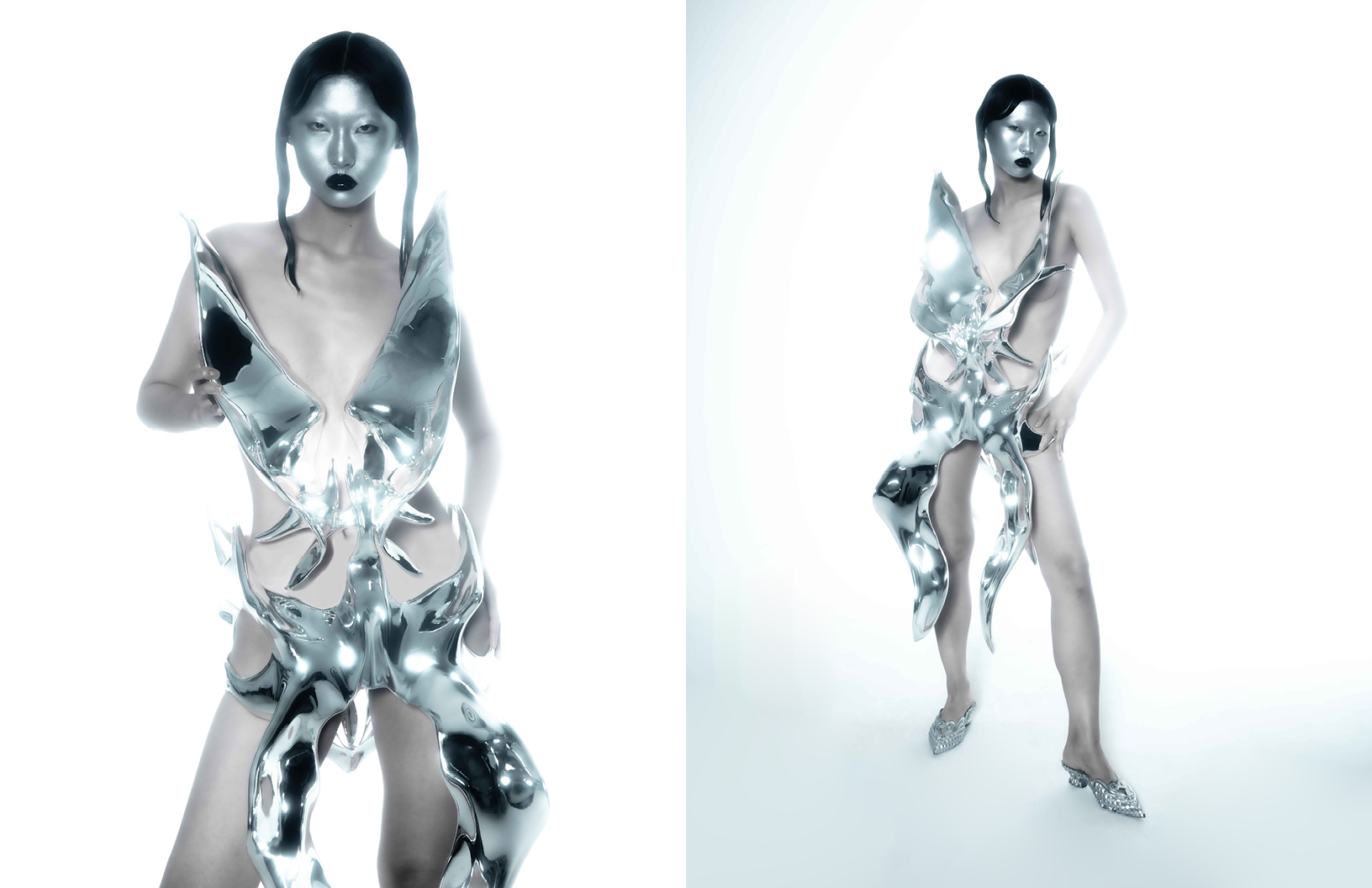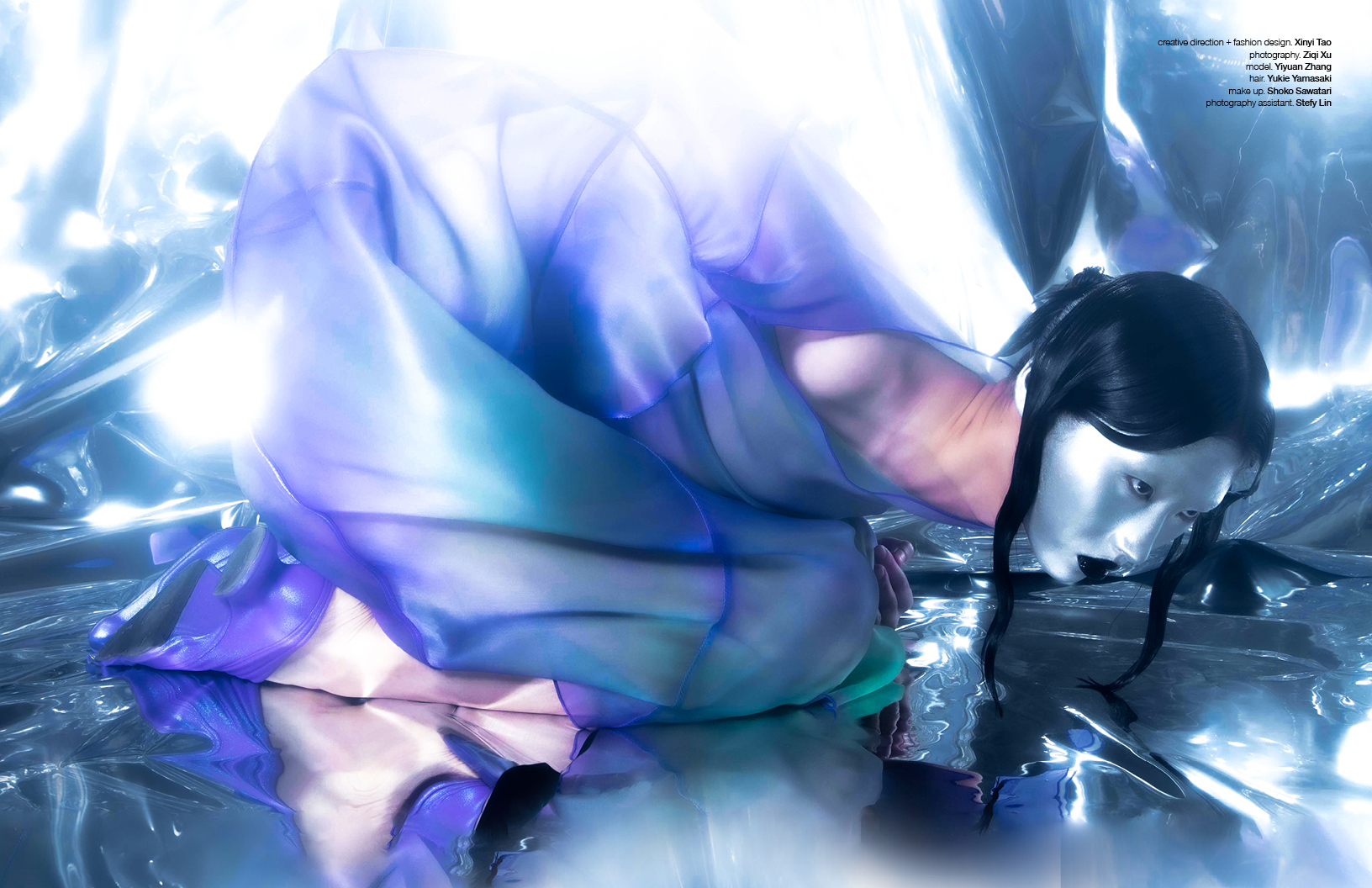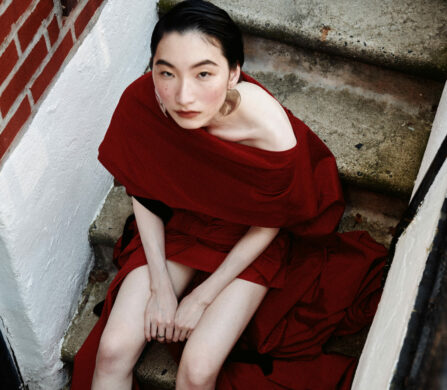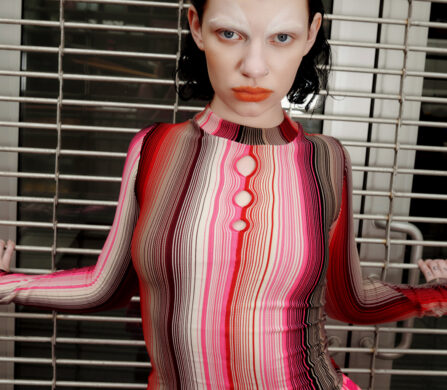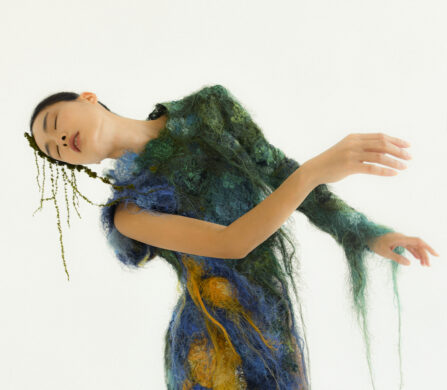Xinyi Tao is a designer who takes the otherworldly and blurs the line between what is real and what is a dream — or what is organism and machine. Xinyi Tao’s latest collection is aptly titled “Syn-biomorph,” a term coined by the creative designer. To define the word, Tao states that it could mean a “structure or form that combines multiple living organisms or biological elements.” Through this mindset, Tao blends the two to create wearable garments and structured forms that juxtapose against one another yet move together seamlessly.
Schön! chats with Xinyi Tao about their design process, what’s to come for their garments in the future, and more.
Can you tell Schön! about yourself? What is your origin story?
I was raised in Suzhou, China and went to Parsons and CSM for my bachelor’s degree in Fashion design. I was captivated by the natural and architectural beauty of my hometown. The city’s tranquil gardens, interwoven with classical architecture, served as my earliest playground for imagination. This early exposure to the fluidity of forms shaped my perspective and developed my interest in exploring similar concepts in fashion. My design philosophy evolved to embrace this balance of contrasts – natural versus synthetic, softness against structure.
What is the ethos behind your clothing?
The ethos behind my clothing is a synergy of contrasts—natural vs synthetic, traditional vs futuristic, organic vs structured. It’s about embracing the paradoxical nature of fashion and challenging our perception of what it can be.
How did the place where you grew up influence you as a designer?
Suzhou, often referred to as the ‘Venice of the East,’ is a remarkable blend of natural beauty, centuries-old structures and which influenced my vision of the interplay between nature and man-made constructs. I grew up surrounded by a rich cultural history and the simplicity, yet complexity of the city’s layout fuelled my fascination with organic forms and structures. This fusion of ancient aesthetics and modern development in my hometown inspired me to explore similar concepts in fashion, striving for a seamless blend of natural forms and human-made materials.
This collection was inspired and influenced by ‘biomorphism’, how do you portray this through the garments?
The influence of “biomorphism” is most apparent in the organic, structured forms of the garments, which mirror the fluidity and complexity of nature. I reversed the material and form from Noguchi’s solid sculptures, using waterish flowy fabric to create organic, structured forms that hold themselves. Also, instead of the usual way people do pattern designs, going vertically, I was inspired by how Noguchi crafts an akari light. I made a hole in the central structure and let it go horizontally on the waist to wrap around and naturally fit on the body instead of using darts. The intent is to let the garments flow and fit naturally on the body, which is also deeply inspired by the philosophy of Taoism.
This collection was loosely influenced by Donna Haraway’s Cyborg Manifesto — what about it inspired you?
Haraway’s work shaped my understanding of the “cyborg”, not only because it blurs the lines between human and animal, organism and machine, natural and unnatural, but also because of its feminist underpinnings. According to Haraway, Cyborg is the illegitimate child of militarism, patriarchal capitalism, and national socialism, while “bastards” are often unfaithful to their birth. I was cheered up by her optimistic feminist concepts. This statement blew my mind and made me rearrange my perspective on fashion and technology. This hybrid defies patriarchal norms and traditional boundaries, makes me want to create something that combines contradicting visual aspects with unconventional materials and pushes the boundaries of what we perceive as fashion.
What are some of the textiles and techniques that you used to create this collection?
I tested a lot of ways to create a “floating” and self-standing structure without boning construction in the form of “Bell,” “Noctiluca,” and “Cypripedium.” By playing and adjusting the grain line angles of liquid metallic organza, I crafted these self-standing circular structures that encapsulate a unique hollow with volume beneath the surface, giving rise to a dimensional volume. Look “Orchid” and look “Scorpion” are designed with 3D modelling and printing techniques. These technological methods enabled me to challenge traditional design boundaries and blur the vision of reality and fiction.
What is it about the digital and real world blending together that pushed you to create these garments?
The blending of the digital and real world, what I refer to as the ‘cyborg’ phenomenon, has always fascinated me and formed a cornerstone during my designs. My obsession with sci-fi novels extends beyond their exciting imagination, it’s their cautionary allegory of the real world that truly captivates me. I believe that as we move further into the digital age, the boundaries between the tangible and virtual will increasingly blur. Fashion has been a way of identity and self-expression, which would not be isolated from this transformation.
Was there an aspect of designing or creating this collection that you found challenging or enlightening?
Of course. It is both challenging and enlightening to see new media and new technologies evolve and learn to use them. 3D modelling and printing was new to me. The challenge also lies in maintaining the integrity of the fabrics while adapting them to create solid forms. The material selection was difficult, and ensuring the fabric to capture the fluidity and organic form that I envisioned took a great number of experiments. But it was always fun for me to conquer challenges, learn new techniques and get skillful.
What do you hope people feel after wearing one of your garments?
I hope people can feel like being part of a sci-fi fairyland, an idea of technology-enhanced nature. This collection could evoke a sense of curiosity, exploration, and forward-thinking fashion.
You bring up Isamu Noguchi’s art, what is it about their art that inspired you? Are there any other specific artists or craftsmen that have influenced your work?
Noguchi’s art represents a synthesis of Eastern spatial aesthetics and the modern rationality of the West. I am especially drawn to the way he creates fluidity and movement using static and rigid materials that influenced my work. I. M. Pei, Neri Oxman and Michael Hansmeyer are also important to my design path.
Other than specific craftsmen, the philosophy of Taoism had a great impact on my way of seeing things and helped me calm down throughout challenges. “The way that can be told of is not an unvarying way; the names that can be named are not unvarying names.” This idea matches my vision of combining natural and unnatural characters perfectly. It also encouraged me to look more into the flow of nature instead of being stuck in one direction of thinking. I perceived this philosophy of harmony and balance to resonate with my theme and then developed a very personal interpretation and integration of a subjective “biomorphism.”
Lastly, how do you see your garments grow and evolve in the future?
I see my garments becoming even more integrated with technology, perhaps even incorporating wearable tech or responsive materials. I want to explore the intersection between biology and technology and push the boundary of fashion further, and how clothing can adapt and respond to the wearer’s needs.
Learn more about Xinyi Tao by following them on Instagram.
creative direction + fashion design. Xinyi Tao
photography. Ziqi Xu
model. Yiyuan Zhang
hair. Yukie Yamasaki
make up. Shoko Sawatari
photography assistant. Stefy Lin














